
How can people say they are hungry when they have enough food at their disposal? On the Indonesian island of Siberut, the term 'hungry' does not just refer to the lack of food, but above all the absence of social contacts to use a meal. Sharing food during rituals is more satisfying than the nutritional value of the food itself. That is the conclusion of Darmanto Darmanto in his Ph.D. research "Good to Produce, Good to Share: Food, Hunger and Social Values in a Contemporary Mentawaise Community". Darmanto defended his dissertation succesfully the 26th of november 2020.
Darmanto recorded more than 3,000 meals among Mentawaians families. His research contributes to the idea of 'global food and security', a term often used in policy-making in recent decades. Darmanto: "You cannot only study food security just from an economic or nutritional perspective. The social and cultural definition of hunger are also important for food security issues". Food is, Darmanto concludes, not only a biological necessity, but it also plays a major social and cultural role in the life of the Mentawai people. When the cultural meaning of 'being hungry' is not taken into account, wrong conclusions can be drawn and a development project will set up to fail.
Hunger in Mentawai
Siberut is part of the Mentawai Islands, which are situated some 100 km off the coast of West Sumatra in Indonesia. The island is almost 403,000 hectares and has a lot of fertile lands. Darmanto did 15 months of fieldwork in the settlement of Muntei, where about 650 people live. Regularly these inhabitants claim to feel malaje (hungry). The Food Security and Vulnerability Atlas of Indonesia (2015) classifies that the island is an area of food insecurity. With this in mind, the Indonesia government sends rice to the island. But the island is wealthy in sources that produce food in abundance. During his second year of fieldwork, Darmanto realised that 'being hungry' is not related to a lack of food, but to the feeling that people have about food. The family with whom he ate a meal felt sorry for him. Darmanto: "I was alone at the time, had just a handful of Mentawaian's friends and I didn't come from the island. So I had no family to take care of and I was not familiar with the local food such as sago and taro. That family told me I would be 'hungry'. Hunger is associated with loneliness by the Mentawai. So it is not the quantity of food that matters to them, but what food and with whom you can eat it".
No satisfaction after 300 kilos of rice
The villagers obtain food from surrounding ecosystems such as sago fields, taro fields, their gardens, forest and river fields, the sea and mangrove forests. In addition to plant food that is available in abundance, the villagers also have access to animal food and regularly eat meat and fish. People consume three decent meals a day and in about 70% of cases, those meals contain fish or meat. Darmanto: "Sago and meat are seen as satisfying foods. If a Mentawai were to have 300 kilos of rice per year but he is alone, he would not feel full and would say he is hungry. The government program of giving rice to the Mentawaians, for example, adds very little. That is the importance of my studies. You have to know the local and specific cultural circumstances to know whether people feel satisfied and whether they feel secure. Rice for Poor People program (Beras Untuk Orang Miskin) sent to the island is not particularly in good quality and sometimes has been given to the pigs and chickens".
Improving aid programmes
This knowledge is important for any external development program, either from governments and NGOs. Darmanto: "Good faith is not enough. If you make the wrong assumption about food insecurity, the whole programme of creating a healthy food system will not work. Like the sending of rice by the Indonesian government. Anthropologists can contribute to the success of emergency programmes because they understand the cultural significance of, in this case, the sense of hunger".
-
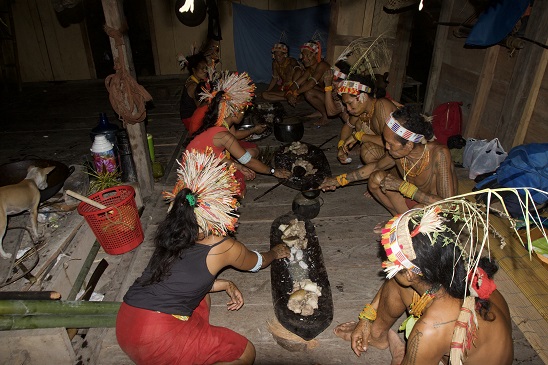
Eating and sharing together in a punen. All member of uma, social alllies and friends enjoy food together (2016) © Theofilus Samekemek -
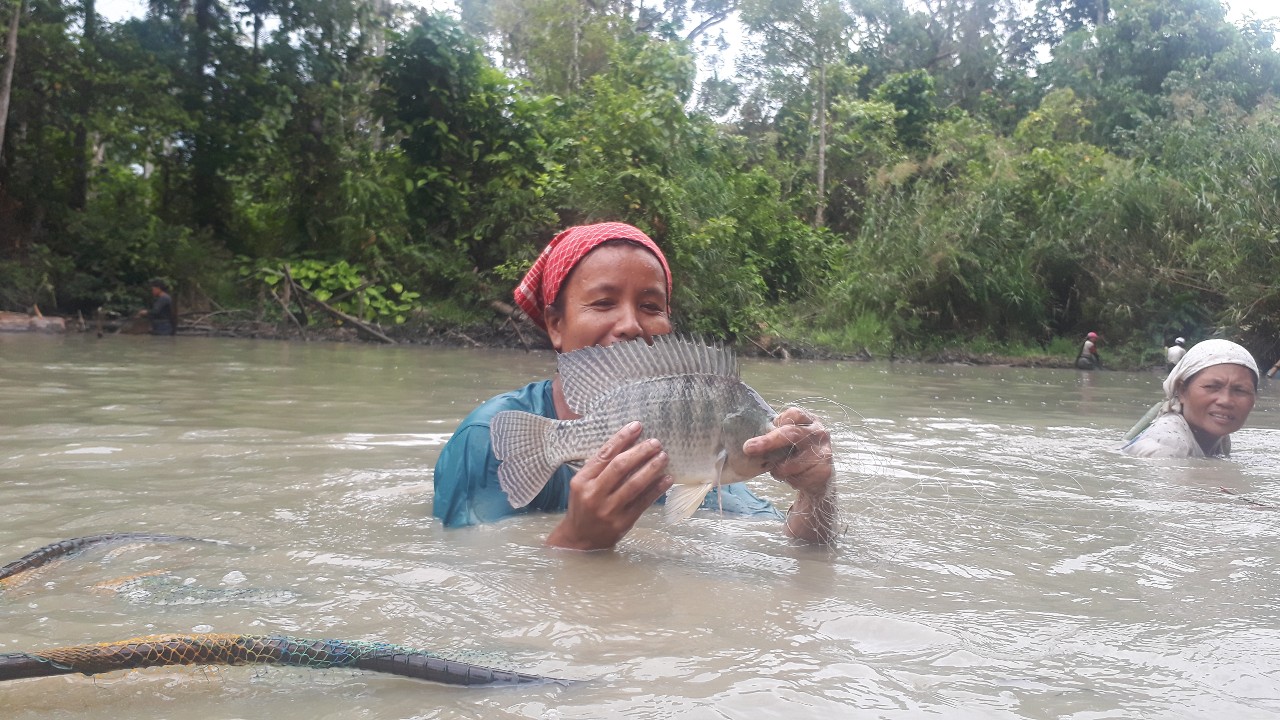
A group of Samekmek women is doing collective fishing near Kokok River (2016) © Teofilus Samekmek -
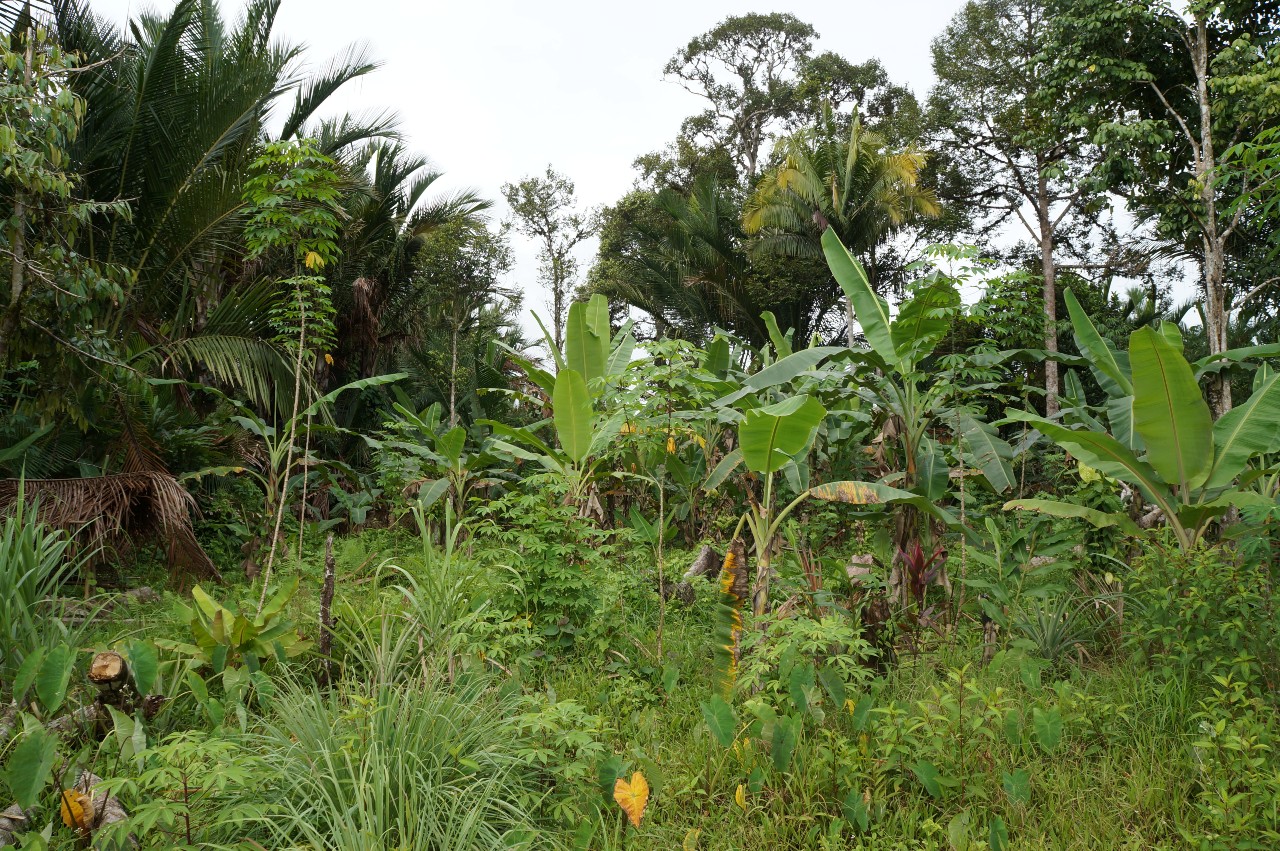
The mature garden (mone) is full of combination of fruit trees and staple food (sago, cassava, and banana), spices (lemon grass, ginger, sugar cane, etc) (2012) © Darmanto -
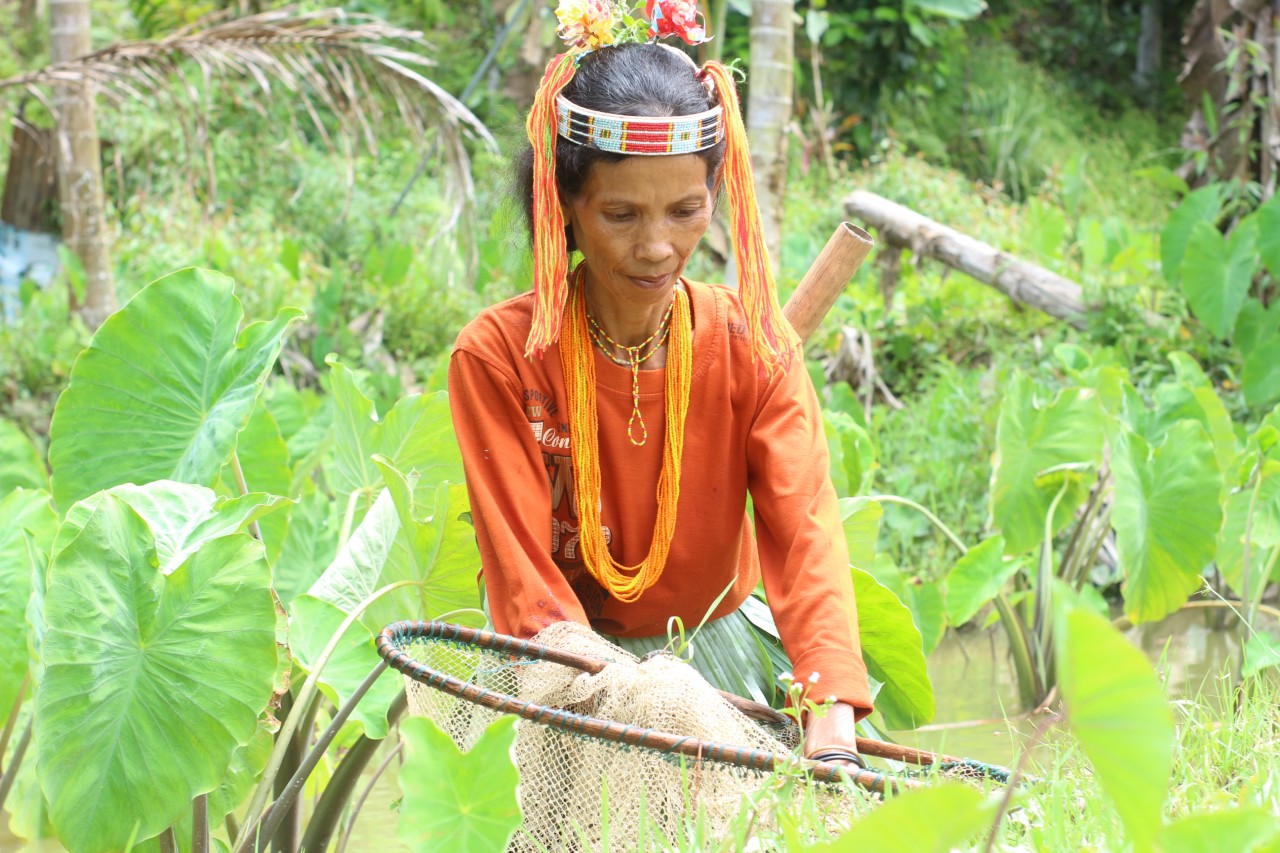
A woman collects small fish, shrimps and frogs in a taro garden in the wet season. Taro is a gendered space, culturally and economically important for women (2018) © Teofilus Samekmek -
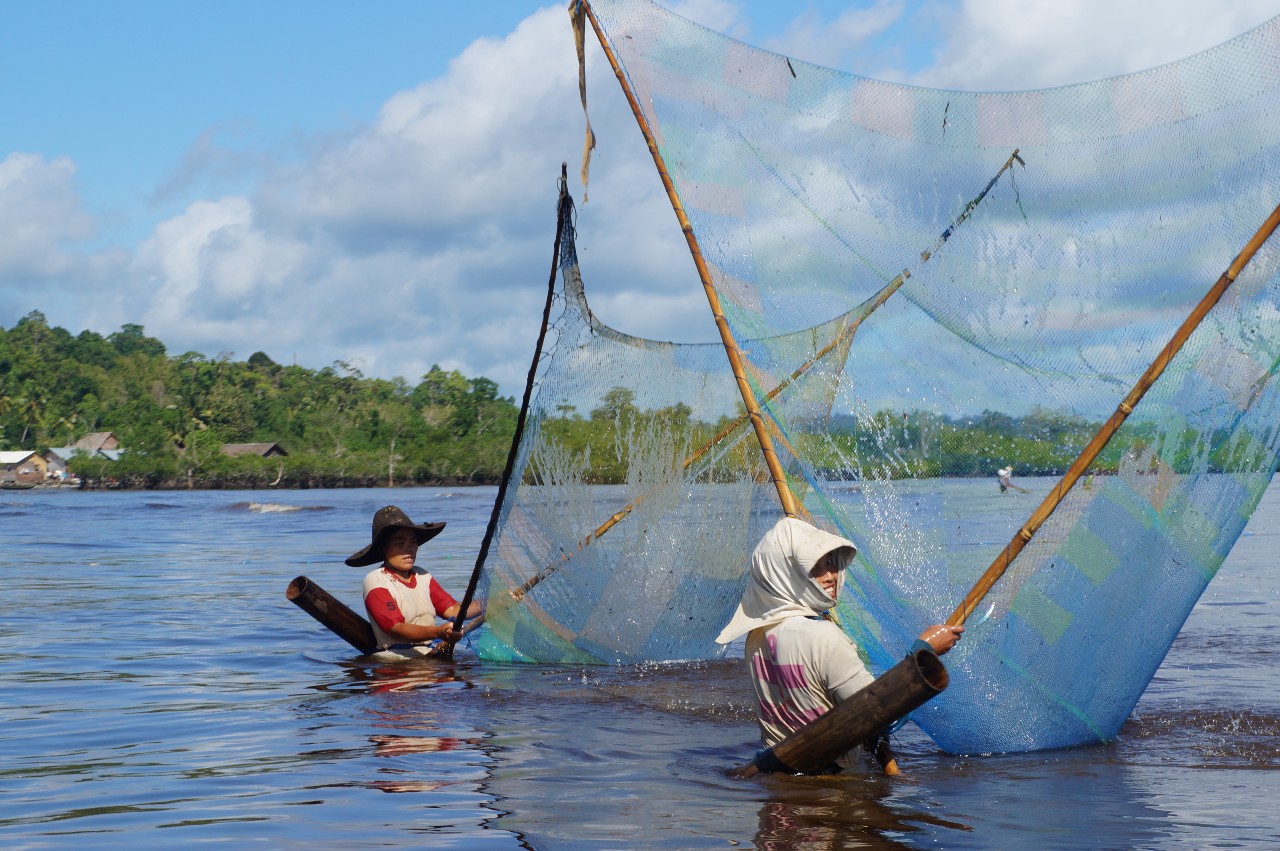
Two women from Muntei do fishing in the mouth of Sabirut river in the morning, using a large net (panu) (2014) © Darmanto -
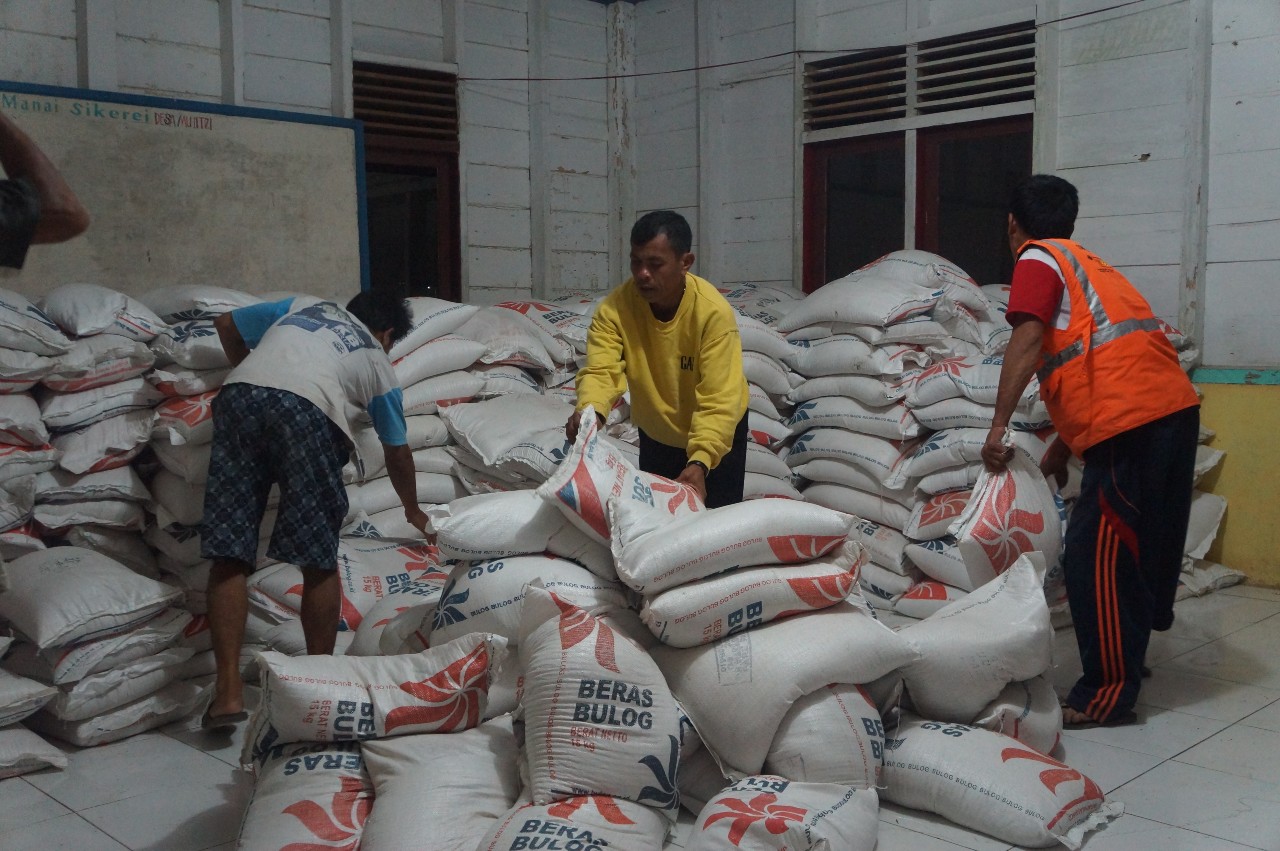
People distribute poor people's rice (RASKIN) in the village office (2014) © Darmanto -
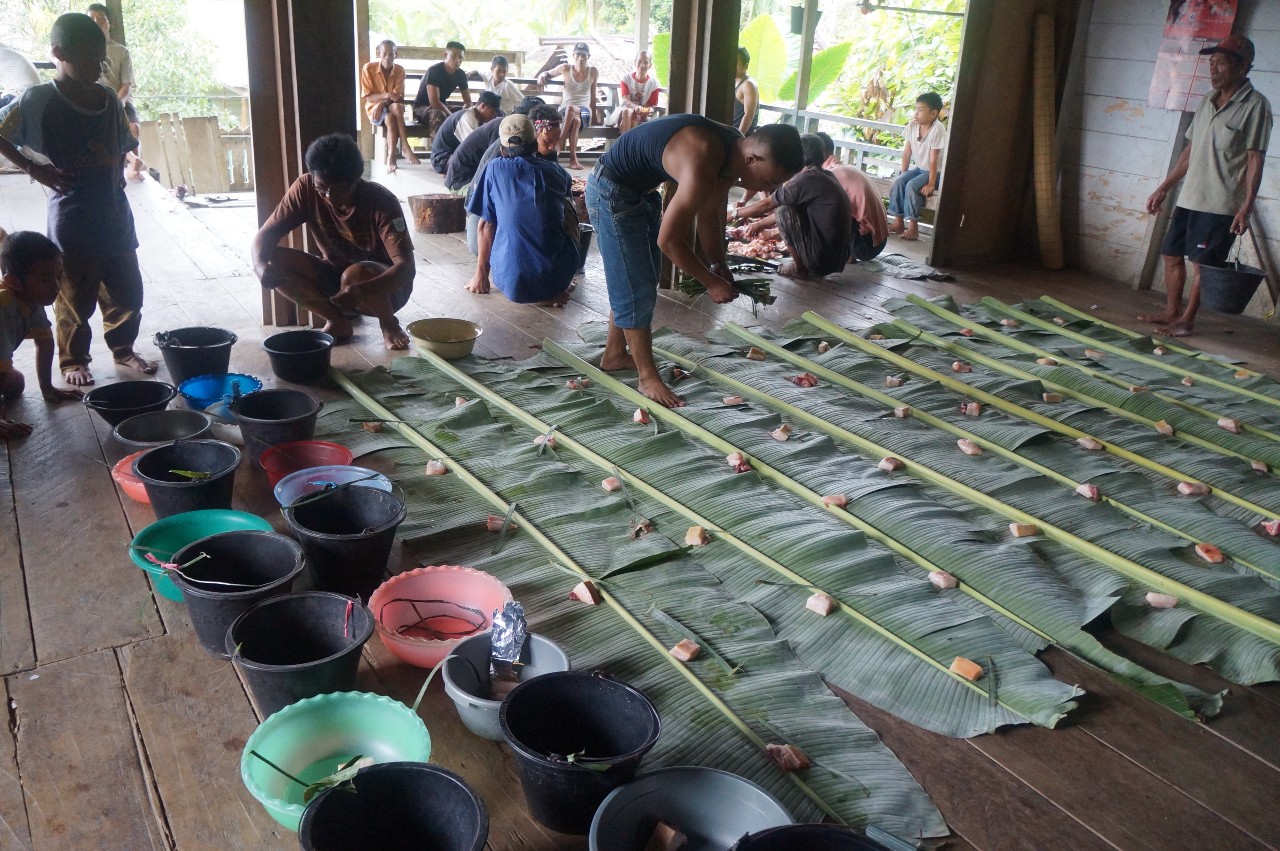
Muntei people distribute pork during Christmas' festive (2014) © Darmanto






